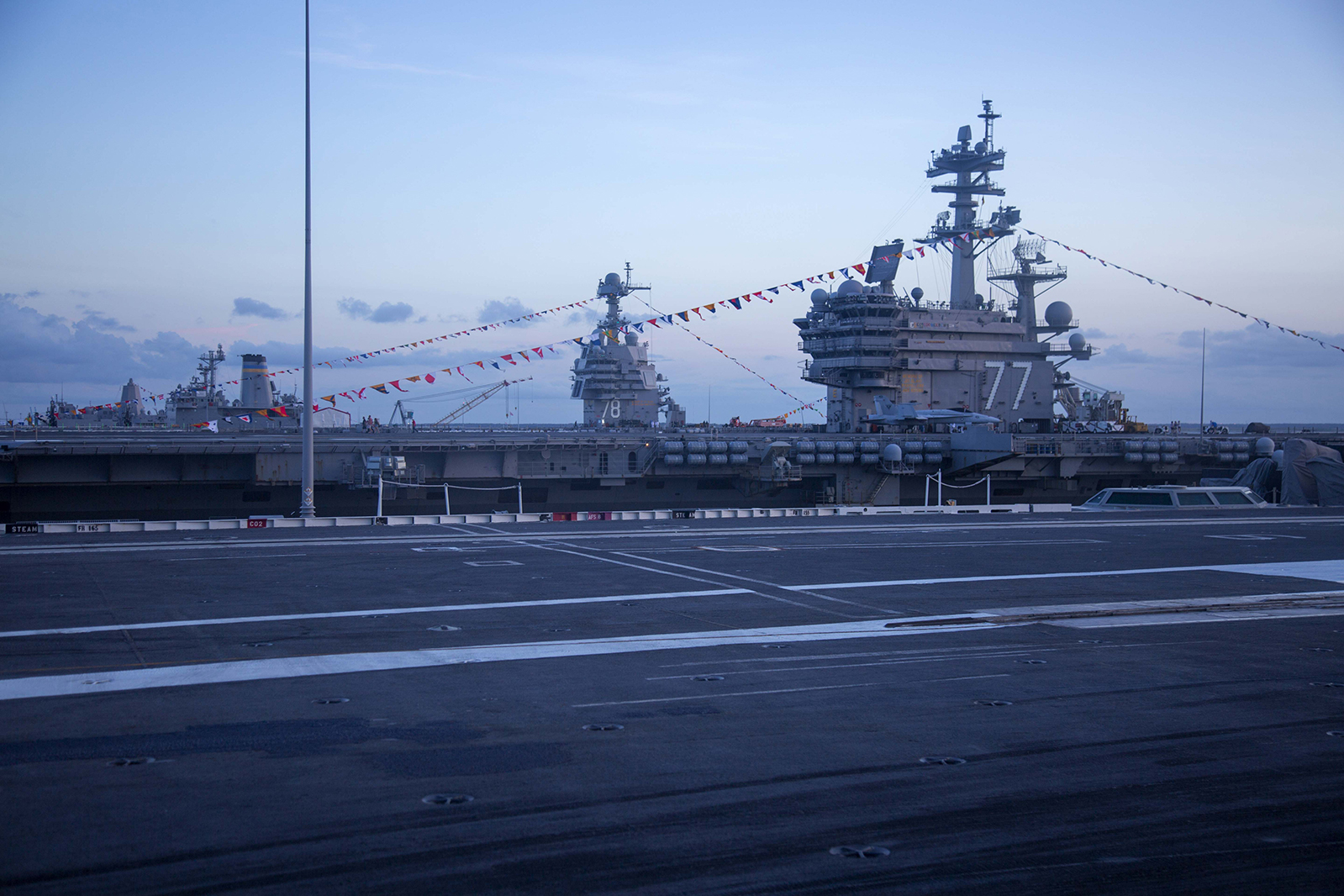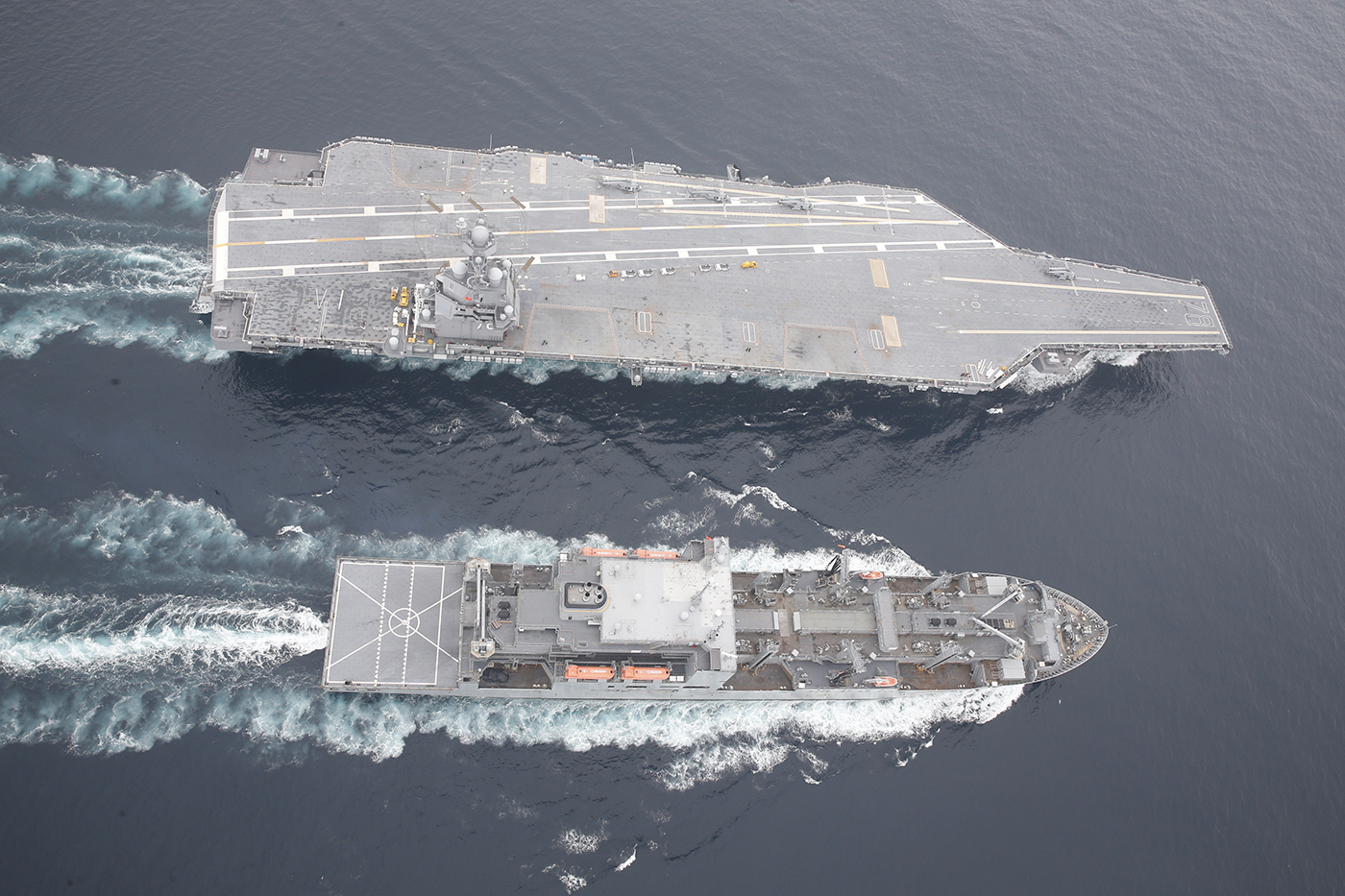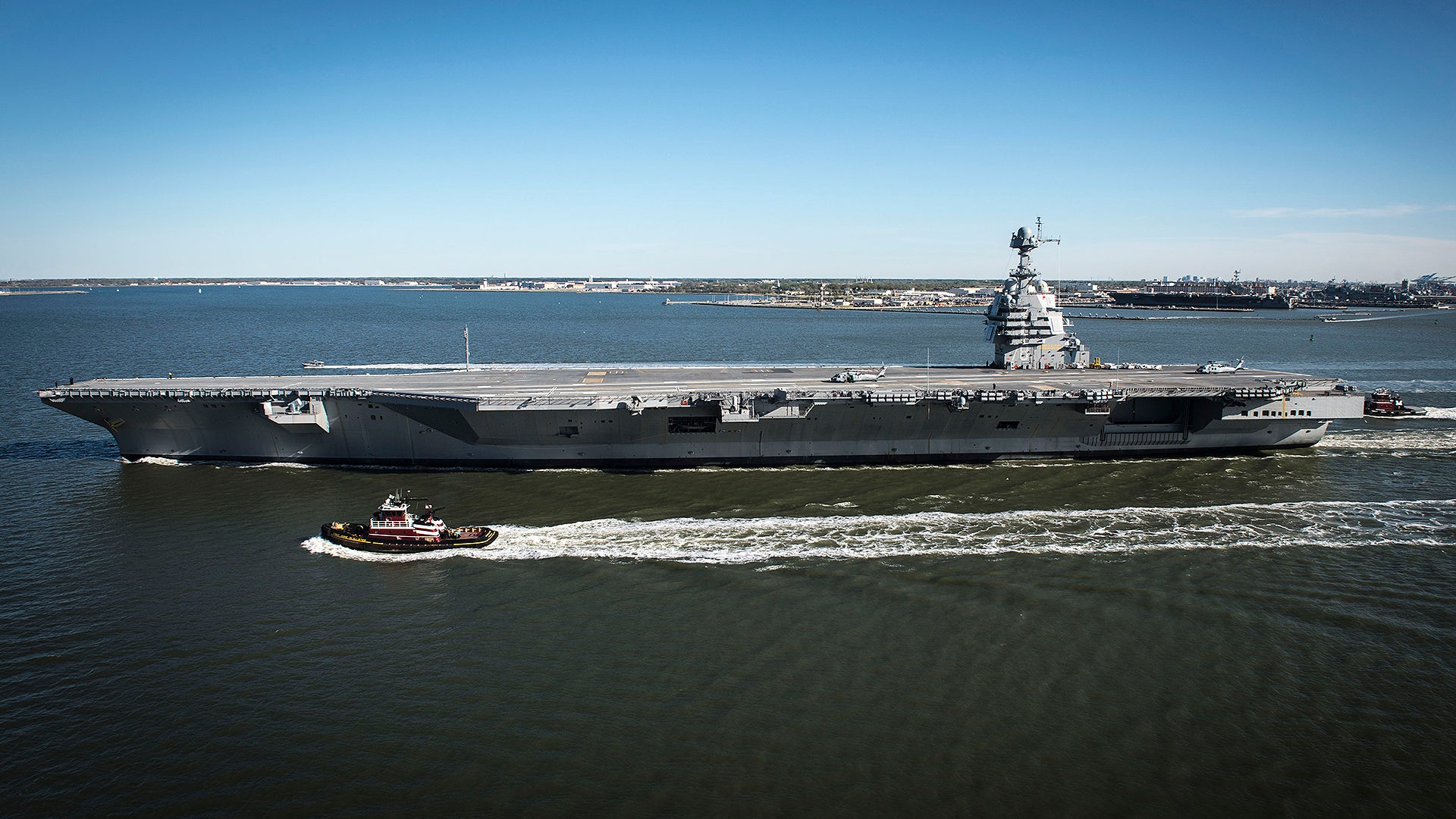The cost of an American nuclear-powered supercarrier has risen massively with the introduction of the Ford class and there doesn’t appear to be any relief in sight even as the design matures and is reproduced. Updated cost estimates were published in the Congressional Research Agency’s latest report to Congress on the Ford class carrier program that was released on July 2nd, 2018. It comes as USS Gerald R. Ford (CVN-79), already the most expensive ship ever built, continues to face major developmental issues and unforeseen cost overruns.
USS Gerald R. Ford (CVN-78), procured in 2008 and already in testing, is now calculated to cost $13B. That is roughly double the cost of the last Nimitz class carrier built, the USS George H.W. Bush (CVN-77), including inflation. USS John F. Kennedy (CVN-79), procured in 2013 and is currently deep in the construction process, is now calculated to cost $11.3B. USS Enterprise. (CVN-80), procured this year and is still in the very early stages of construction, is projected to cost $12.6B. The yet to be named CVN-81 is slated to leap in price to just over $15B.

It’s worth noting that the figures are in then-year dollars (based on procurement date) but inflation alone does not justify the increase in cost. The original idea was that the cost would decline after the first Ford class ship and also keep in mind these figures do not include research and development, which represents many billions of additional dollars.
It’s not exactly clear why CVN-81 will cost $2.5B more than its predecessor, but that is a massive increase. Overall the numbers are staggering across the board, with little to no savings realized as the design matures.
It’s possible that the part of the increase in cost—or at least the lack of savings on successive ships—may be in part due to the fact that there will be some differences between them. The Dual Band Radar (DBR) mounted on the Ford has proven to be problematic and it will only exist on the USS Gerald R. Ford and a truncated version of it will be installed on the Navy’s three Zumwalt class destroyers. This reality could make it very expensive to support and limit the upgrades and expanded capabilities it receives in the future.
A more modular and updated radar system, the Enterprise Air Surveillance Radar (EASR), will outfit American aircraft carriers and their amphibious assault ship cousins from Kennedy on in two distinct variants. One will have three arrays (instead of six on the DBR) and is intended for static mounting on the Ford class’s island superstructure. The other will have a single rotating array that will be installed on America class (from LHA-8 on) and LX(R) amphibious assault ships.

But beyond the radar system, small changes between carriers in a class are nothing new, and the spike in cost happens after Kennedy, not before. Regardless, these ships are not going to get any cheaper and that is probably the most important takeaway from this report.
Congress will have to make decisions on accelerating the rate at which is procures supercarriers in an effort to realize a 12 ship fleet in the coming decades. Currently, just ten nuclear carriers are active in the Navy’s inventory. The idea is that by the late 2020s this number will increase to 11, but President Trump says he wants 12, and that isn’t an unheard of point-of-view in defense policy circles. But getting there will be expensive and it will require an accelerated shipbuilding schedule. The CRS report reads:
“Another issue for Congress for FY2019 concerns the date for achieving the Navy’s 12-ship force level goal for aircraft carriers. As noted earlier, under the Navy’s FY2019 30-year shipbuilding plan, carrier procurement would shift from 5-year centers to 4-year centers after the procurement of CVN-82 in FY2028, and a 12-carrier force would be achieved on a sustained basis in the 2060s. As also noted earlier, shifting carrier procurement to 3- or 3.5-year centers could achieve a12-carrier fleet as soon as the 2030s, unless the service lives of one or more existing carriers were extended. Other things held equal, procuring carriers on 3- or 3.5-year centers rather than 4-year centers would increase Navy funding requirements during the period of the 30-year shipbuilding plan for procuring aircraft carriers and for operating and supporting a 12-carrier force rather than a force of 11 or fewer carriers.”
The possibility of extending the life of existing Nimitz class carriers is being examined to help boost the Navy’s carrier fleet, but doing so will result in increased fiscal requirements for sustaining and upgrading those vessels. Doing this while also accelerating procurement of new carriers will just add to budgetary demands.

Also, Congress will need to decide on approving a two or three block buy of carriers, or at least long-lead materials needed for their construction, in order to ramp up output and achieve any benefits of scale. A block buy would also make it much harder for Congress to slash carrier output in the future if the defense budget were to retract. Considering how political and special interest-laden shipbuilding is—in some ways, it is the ultimate Pentagon pork—a block carrier buy is looking more likely than not at this point.
Amazingly, shock trials for CVN-78 still have not been fully approved and funded, and that critical test could be foisted on the second ship in the Ford class years in the future. This is so laughably stupid and reckless that I really don’t need to provide any more commentary on it than I already have. But realize that the fourth of these vessels could be under construction by the time they shock test the design.

Additionally, none of this confronts the major deficiencies in many of Ford’s critical components that I have been reporting on for years and that continue to plague the ship even though the Navy’s mouthpieces work hard to act otherwise. The glaring lack of available data alone on the current performance of these systems in relation to their threshold requirements is concerning in itself.
The report doesn’t detail the growing cost of reworking and fixing issues with Ford following a series of shakedown cruises.
$62.9M was just requested to fix a number of these problems. According to Defensenews.com, they include:
* $12.7 million to fix “continuing technical deficiencies” with the Advanced Weapon Elevators.
* $30 million for “tooling and repair” of the main thrust bearings, issues that the Navy has blamed on the manufacturer.
* $20 million for additional repairs, a prolonged post-shakedown availabilty, and parts and labor.
The ship also suffered a second thrust bearing failure during tests earlier this year, requiring it to return to port. This was blamed on a manufacturing defect. The ship’s voltage regulators have also been a source a frustration. Then, in May, the carrier had to return to port shortly after setting sail due to issues with providing adequate steam to spin its four massive propellers.
Once again, these issues are in addition to the larger problems with the vessel’s major components dating back many years. With all this in mind, the big question is when will the ship be able to actually enter operational service and meet its threshold requirements and how much will it cost to get it there? All this also impacts the future USS John F. Kennedy as its construction continues to move forward.
Finally, and unsurprisingly considering what this report highlights, it also brings up the congressionally mandated study ordered to explore the possibility of building smaller, less expensive and less complex aircraft carriers instead of just nuclear supercarriers. I have long posited that building smaller carriers will be critical to maintaining a flexible and fiscally sustainable carrier force. You can read my detailed case for such an initiative here, here, here, here, and here. The RAND study was commissioned in 2015, delivered in 2016 in classified form, and was published publically in 2017. Its executive summary is pasted directly into this CRS report and for good reason.
There has been little action on this document since it emerged. This is likely a result of a far more generous defense budget and the end of sequester under President Trump. But the current defense budget levels are unsustainable and looking toward a mixed fleet of supercarriers and smaller carriers may not be a choice but a necessity in the years to come.
But at present, the U.S. Navy continues to buy only supercarriers for its traditional fixed-wing naval airpower needs and the cost of those ships is approaching the entire yearly defense budget of Canada, each.

Contact the author: Tyler@thedrive.com
